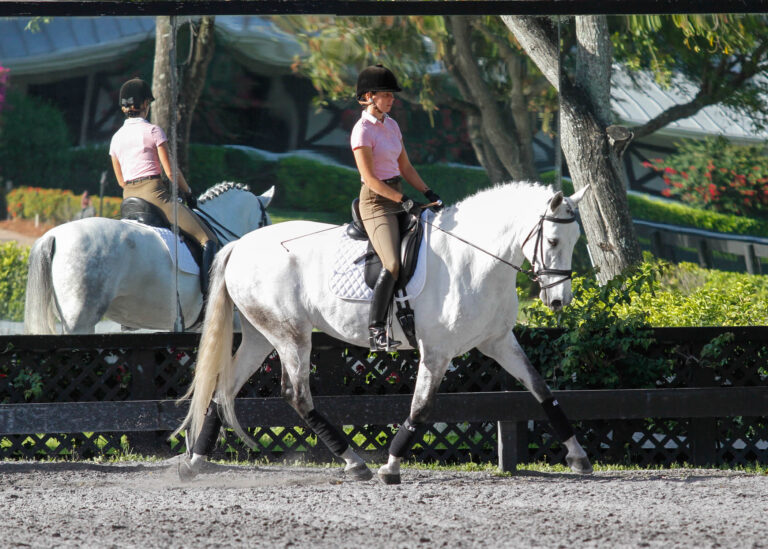To get your horse’s pushing engine in gear, start from the moment you walk out of the barn with your horse in hand. Do you have to pull him out by his face, or does he step smartly from his hind legs and walk next to your shoulder? He might need to be asked with a cluck or a tap from your whip.
Step 1: Walk in Hand
Ask your horse to give you the same walk that you will expect when you’re sitting on him. While walking in hand, his only restrictions are the weight of the saddle and bridle. (When you mount, no matter how skilled you are, your weight is an additional restriction. Ideally, you want the energy stepping through his back and to your hand before he has this restriction.) Your horse’s walk should convey a quiet workmanlike attitude. When you have a self-perpetuating, relaxed walk, get on. Many top riders hand walk their horses for 10 or 15 minutes before mounting.

As an Amazon Associate, Dressage Today may earn an affiliate commission when you buy through links on our site. Products links are selected by Dressage Today editors.
Step 2: Mount and Walk on a Long Rein
Walk on a long rein (if it feels safe). Be sure the pushing engine is still in gear given the added restriction of your weight. Carry your own weight in a balanced way so your horse’s body won’t be inclined to become like a hammock. If you have a mirror in your arena, walk parallel to it and ask yourself: Why are we covering ground? Is it because of the front-end pulling engine or the hind-end pushing engine?

Listen to the rhythm of the four-beat walk. When he’s balanced, your horse takes energetic steps from behind that are deliberate and self-perpetuating, but not hectic. Feel the energy flowing under your seat. When he’s stepping “through” his body, you can steer him easily with your body. Give yourself a steering test by riding simple figures and diagonal lines without rein contact. (Repeat Exercise 1 on page 64.) Leave your hands on the withers and point him on your line of travel with your eyes, shoulders, hips, knees, and toes, and step in the direction you want to go. He’ll follow your weight and reach in that direction.

In her book, When Two Spines Align: Dressage Dynamics, trainer, author and Dressage Today technical editor Beth Baumert helps readers discover how to use “positive tension” and “Powerlines” to become balanced and effective in the saddle. Use of positive tension and powerlines allows the rider to be strong but still soft. In this excerpted chapter of the book, Baumert discusses the inherent balance problems that all horses face and how riders can help overcome these issues by better understanding balance.
This excerpt is used with permission from Trafalgar Square Books. To learn more, visit dressage-dynamics.com.











